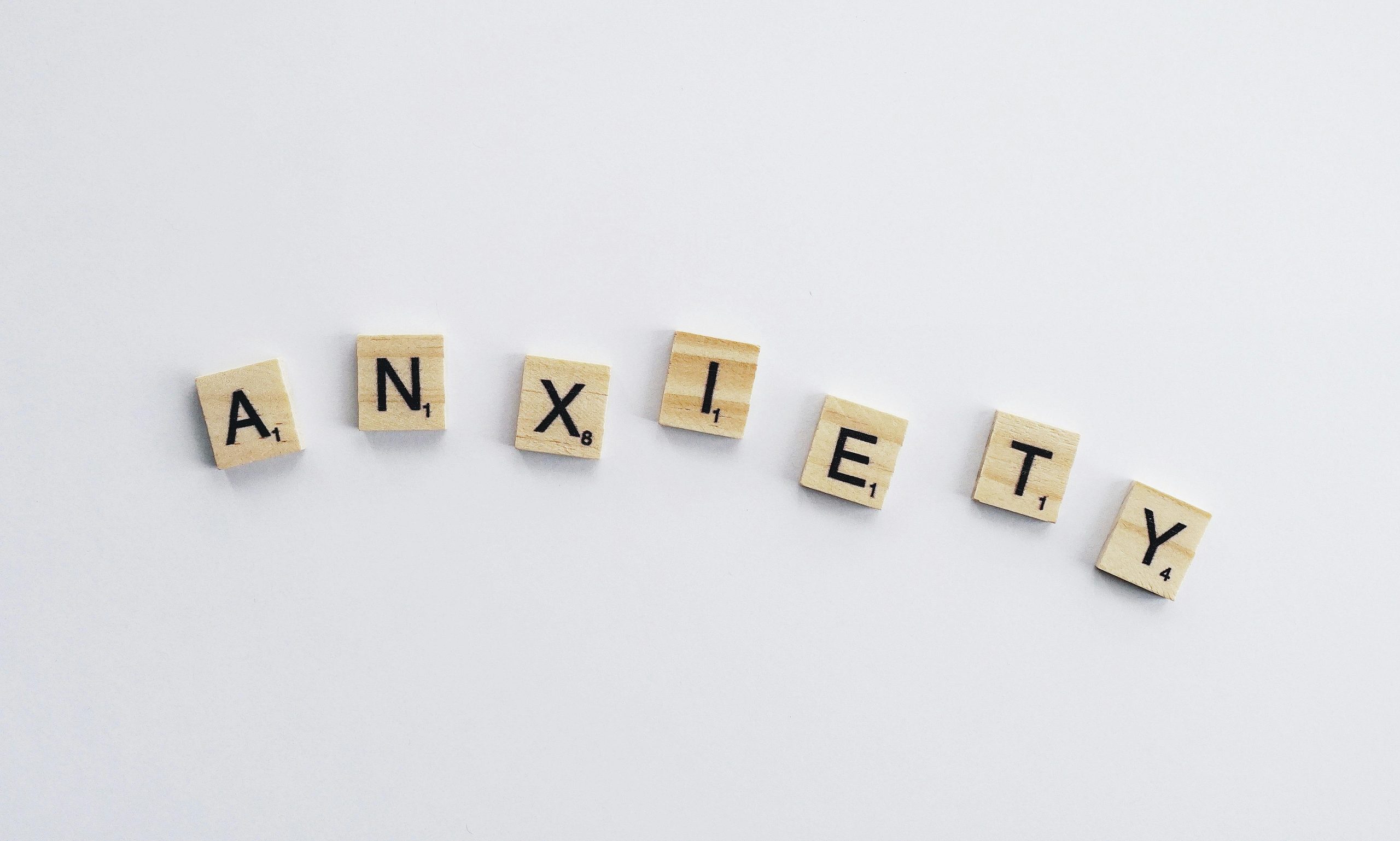
What Is Anxiety?
Anxiety is a multifaceted and pervasive mental health condition characterized by excessive worry, fear, and nervousness. It goes beyond the typical feelings of stress or apprehension and can significantly impact a person’s daily life. Individuals with anxiety disorders often experience persistent and uncontrollable thoughts about potential threats or dangers, even when there is no imminent risk.
Physical symptoms of anxiety may include restlessness, muscle tension, increased heart rate, sweating, trembling, and gastrointestinal disturbances. Anxiety disorders can manifest in various forms, such as generalized anxiety disorder (GAD), social anxiety disorder, panic disorder, and specific phobias.
Causes of anxiety are diverse, encompassing genetic factors, brain chemistry imbalances, life experiences, and environmental stressors. Traumatic events, chronic stress, and a family history of anxiety can contribute to its development. Anxiety often coexists with other mental health conditions, such as depression.
Effective treatment for anxiety involves a combination of psychotherapy, medications, and lifestyle changes. Cognitive-behavioral therapy (CBT) is a common therapeutic approach that helps individuals identify and modify negative thought patterns. Medications, such as selective serotonin reuptake inhibitors (SSRIs) or benzodiazepines, may be prescribed to alleviate symptoms. Lifestyle modifications, stress management techniques, and support from mental health professionals play crucial roles in managing anxiety and improving overall well-being.
Brief History of Anxiety
The understanding of anxiety dates back centuries, with its conceptualization evolving across different cultures and historical periods. Here’s a brief history of anxiety:
- Ancient Civilizations:
- Ancient cultures recognized symptoms resembling anxiety. In ancient Greece, Hippocrates described a condition known as “melancholia,” which included symptoms similar to modern-day anxiety and depression.
- Middle Ages:
- During the Middle Ages, anxiety was often attributed to supernatural causes, such as demonic possession. Religious institutions played a significant role in shaping perceptions of mental health.
- Renaissance and Early Modern Period:
- The Renaissance saw a shift towards more secular and humanistic perspectives. However, mental health continued to be influenced by spiritual beliefs. Philosopher René Descartes associated anxiety with disturbances in the flow of animal spirits.
- 18th to 19th Century:
- The 18th-century Enlightenment led to more scientific approaches to mental health. The term “neurasthenia” was coined in the 19th century to describe symptoms similar to anxiety. Sigmund Freud’s psychoanalytic theories in the late 19th century also contributed to understanding anxiety.
- Early 20th Century:
- The early 20th century saw the emergence of psychological theories focused on anxiety. Psychologist Ivan Pavlov explored classical conditioning, and John B. Watson’s behaviorism influenced the understanding of anxiety as a learned response.
- Mid to Late 20th Century:
- The mid-20th century brought advancements in pharmacology, leading to the development of medications for anxiety. The Diagnostic and Statistical Manual of Mental Disorders (DSM) introduced specific categories for anxiety disorders, contributing to standardized diagnoses.
- Late 20th to 21st Century:
- Cognitive-behavioral therapy (CBT) gained prominence in treating anxiety. Research on the neurobiology of anxiety, including brain imaging studies, advanced understanding. The stigma surrounding mental health diminished, fostering increased awareness and advocacy.
Today, anxiety is recognized as a common mental health condition, with ongoing research and diverse treatment approaches aimed at understanding its complexities and providing effective interventions. The historical evolution reflects changing perspectives, from mystical interpretations to contemporary insights grounded in psychology and neuroscience.
| Period | Key Developments in the Understanding of Anxiety |
|---|---|
| Ancient Civilizations | Recognition of anxiety-like symptoms, described as “melancholia” in ancient Greece. |
| Middle Ages | Attribution of anxiety to supernatural causes; religious influence on mental health perceptions. |
| Renaissance and Early Modern | Shift towards secular and humanistic perspectives; association of anxiety with disruptions in animal spirits by Descartes. |
| 18th to 19th Century | Emergence of scientific approaches to mental health; introduction of the term “neurasthenia” in the 19th century. |
| Early 20th Century | Pavlov’s work on classical conditioning; Watson’s behaviorism influences the understanding of anxiety as a learned response. |
| Mid to Late 20th Century | Advancements in pharmacology lead to anxiety medications; DSM introduces specific categories for anxiety disorders. |
| Late 20th to 21st Century | Cognitive-behavioral therapy (CBT) gains prominence; neurobiological research advances understanding; reduced stigma and increased mental health awareness. |
This table provides a concise overview of key developments in the understanding of anxiety across different historical periods.
What Causes Anxiety?
Anxiety is a complex condition influenced by a combination of genetic, biological, environmental, and psychological factors. Understanding the diverse causes of anxiety can help tailor effective interventions. Here are key contributors to anxiety:
- Genetics:
- A family history of anxiety or other mental health disorders may increase an individual’s susceptibility. Genetic factors contribute to the risk of developing anxiety disorders.
- Brain Chemistry:
- Imbalances in neurotransmitters, such as serotonin, dopamine, and gamma-aminobutyric acid (GABA), can play a role in the development of anxiety. These chemicals regulate mood and stress responses.
- Trauma and Stressful Life Experiences:
- Exposure to traumatic events, such as abuse, accidents, or significant life changes, can contribute to the development of anxiety. Chronic stress from ongoing challenges can also be a factor.
- Personality Factors:
- Certain personality traits, such as a tendency towards perfectionism, a negative outlook, or a high level of self-criticism, may increase vulnerability to anxiety.
- Medical Conditions:
- Certain medical conditions, such as chronic illnesses, hormonal imbalances, or neurological disorders, can be associated with symptoms of anxiety.
- Substance Use and Withdrawal:
- The misuse of substances like drugs, alcohol, or prescription medications can contribute to anxiety. Withdrawal from certain substances can also trigger anxiety symptoms.
- Environmental Factors:
- Adverse living conditions, exposure to environmental toxins, or a lack of social support can contribute to anxiety. High-stress environments, especially during childhood, may impact mental health.
- Brain Structure:
- Variations in the structure or function of certain brain regions, including the amygdala and hippocampus, are associated with anxiety disorders.
- Personality Disorders:
- Conditions such as obsessive-compulsive disorder (OCD), post-traumatic stress disorder (PTSD), or specific phobias may coexist with generalized anxiety.
- Chronic Medical Conditions:
- Individuals dealing with chronic health issues may experience heightened anxiety due to the impact on their daily lives, uncertainty about the future, and the stress of managing the condition.
Understanding the interplay of these factors is essential for developing personalized treatment plans. Effective interventions often involve a combination of psychotherapy, medications, lifestyle changes, and stress management techniques. Seeking professional guidance is crucial for accurate diagnosis and comprehensive treatment.
What Are the Symptoms of Anxiety?
Anxiety can manifest through a range of physical, emotional, and behavioral symptoms. The severity and combination of symptoms can vary among individuals. Common symptoms of anxiety include:
- Physical Symptoms:
- Muscle Tension: Feeling tense, achy, or experiencing muscle stiffness.
- Headaches: Persistent or tension headaches.
- Fatigue: Feeling constantly tired or lacking energy.
- Gastrointestinal Issues: Upset stomach, nausea, diarrhea, or other digestive problems.
- Increased Heart Rate: Palpitations or a racing heart.
- Sweating: Experiencing excessive sweating, especially on the palms.
- Emotional Symptoms:
- Excessive Worry: Persistent and uncontrollable worrying about various aspects of life.
- Irritability: Easily becoming agitated or irritable.
- Restlessness: Feeling on edge or restless, having difficulty sitting still.
- Trouble Concentrating: Difficulty focusing or a sense of mental fog.
- Sleep Disturbances: Insomnia, difficulty falling asleep, or restless sleep.
- Cognitive Symptoms:
- Racing Thoughts: Intrusive or racing thoughts that are difficult to control.
- Catastrophizing: Expecting the worst-case scenario in various situations.
- Mind Blankness: Difficulty concentrating due to a blank mind or mental block.
- Behavioral Symptoms:
- Avoidance: Avoiding situations that may trigger anxiety.
- Compulsions: Engaging in repetitive behaviors or rituals to alleviate anxiety (common in obsessive-compulsive disorder).
- Social Withdrawal: Avoiding social interactions or isolating oneself.
- Seeking Reassurance: Constantly seeking reassurance from others to alleviate anxiety.
- Autonomic Nervous System Responses:
- Fight-or-Flight Responses: Increased heart rate, rapid breathing, and other physiological responses preparing the body for a perceived threat.
- Panic Attacks:
- Sudden and Intense Fear: Panic attacks characterized by a sudden onset of intense fear, often accompanied by physical symptoms such as chest pain, shortness of breath, and dizziness.
It’s important to note that experiencing occasional anxiety is a normal part of life. However, when anxiety symptoms become persistent, interfere with daily functioning, or cause significant distress, it may indicate an anxiety disorder. Seeking professional help from a mental health provider can aid in diagnosis and the development of a tailored treatment plan.
How is Anxiety Diagnosed?
The diagnosis of anxiety involves a comprehensive assessment conducted by a qualified healthcare professional, typically a mental health provider. Here are the key steps in the diagnostic process:
- Clinical Interview:
- The healthcare provider conducts a thorough clinical interview to gather information about the individual’s symptoms, medical history, family history, and any potential triggers or stressors.
- Diagnostic Criteria:
- The provider refers to established diagnostic criteria, such as those outlined in the Diagnostic and Statistical Manual of Mental Disorders (DSM-5), to determine if the individual’s symptoms align with a specific anxiety disorder.
- Symptom Assessment:
- A detailed exploration of the individual’s symptoms is conducted, including the type, duration, and severity of anxiety symptoms. This may involve discussing physical, emotional, and behavioral manifestations of anxiety.
- Rule Out Other Conditions:
- The healthcare provider considers and rules out other medical or psychiatric conditions that may present with similar symptoms, such as hyperthyroidism, heart conditions, or other mental health disorders.
- Medical Evaluation:
- A physical examination and laboratory tests may be conducted to rule out potential medical causes for the symptoms and to ensure a comprehensive understanding of the individual’s overall health.
- Collateral Information:
- Information from collateral sources, such as family members or close friends, may be considered to gain additional insights into the individual’s behavior and symptoms.
- Psychological Assessments:
- Psychological assessments, including standardized questionnaires and tests, may be administered to measure the severity of symptoms, assess specific anxiety-related traits, and guide treatment planning.
- Duration and Impairment:
- The healthcare provider evaluates the duration and impact of symptoms on the individual’s daily functioning, relationships, and overall well-being.
- Differential Diagnosis:
- Differentiating between various anxiety disorders and related conditions is crucial. This may involve distinguishing generalized anxiety disorder (GAD) from panic disorder, social anxiety disorder, specific phobias, or other mental health conditions.
- Collaborative Decision-Making:
- The diagnostic process is often collaborative, involving open communication between the individual and the healthcare provider. Shared decision-making allows for mutual understanding and agreement on the treatment plan.
An accurate diagnosis is the foundation for effective treatment. Once diagnosed, treatment options may include psychotherapy (such as cognitive-behavioral therapy), medications, lifestyle changes, and other therapeutic interventions tailored to the individual’s needs. Regular follow-up assessments help monitor progress and adjust treatment plans as necessary. If someone suspects they may have anxiety, seeking the guidance of a mental health professional is crucial for an accurate diagnosis and appropriate care.
What Are the Different Types of Anxiety?
Anxiety is a broad term that encompasses various types of anxiety disorders, each characterized by distinct features and symptoms. The main types of anxiety disorders include:
- Generalized Anxiety Disorder (GAD):
- Characterized by excessive, persistent worry and anxiety about everyday matters. Individuals with GAD often experience difficulty controlling their worries and may have physical symptoms such as muscle tension, restlessness, and fatigue.
- Panic Disorder:
- Involves recurrent and unexpected panic attacks, which are intense episodes of fear or discomfort accompanied by physical symptoms like heart palpitations, sweating, and shortness of breath. Panic disorder may lead to anticipatory anxiety about future attacks.
- Social Anxiety Disorder (Social Phobia):
- Marked by an intense fear of social situations and a strong desire to avoid judgment or embarrassment. Individuals with social anxiety may fear public speaking, meeting new people, or being the center of attention.
- Specific Phobias:
- Involves an intense, irrational fear of specific objects or situations. Common phobias include heights, flying, animals, or medical procedures. Avoidance of the phobic stimulus is a typical coping mechanism.
- Obsessive-Compulsive Disorder (OCD):
- Characterized by persistent, intrusive thoughts (obsessions) and repetitive behaviors or mental acts (compulsions) performed to reduce anxiety. Common obsessions include fears of contamination, while compulsions may involve excessive cleaning or checking.
- Post-Traumatic Stress Disorder (PTSD):
- Develops after exposure to a traumatic event. Symptoms may include intrusive memories, nightmares, flashbacks, avoidance of reminders, and heightened arousal. PTSD can affect individuals who have experienced or witnessed trauma.
- Separation Anxiety Disorder:
- Primarily diagnosed in children, separation anxiety disorder involves excessive anxiety about separation from home or attachment figures, leading to distress and impairment in daily functioning.
- Selective Mutism:
- Predominantly observed in children, selective mutism involves an inability to speak in certain social situations, despite speaking comfortably in other environments. It often coexists with social anxiety.
- Agoraphobia:
- Involves intense fear and avoidance of situations where escape might be difficult or help unavailable in the event of a panic attack or other anxiety symptoms. Agoraphobia may lead to avoiding crowded places, public transportation, or open spaces.
These anxiety disorders can coexist or overlap, and individuals may experience symptoms from more than one category. Effective treatment often involves a tailored approach, combining psychotherapy, medication, and lifestyle interventions to address the specific challenges associated with each type of anxiety disorder. Seeking professional guidance for accurate diagnosis and personalized treatment is essential.
How is Anxiety Treated?
The treatment of anxiety typically involves a multidimensional approach that addresses the unique needs of the individual. Treatment options may include psychotherapy, medications, lifestyle modifications, and support from mental health professionals. Here are common methods used in the treatment of anxiety:
- Psychotherapy (Counseling):
- Cognitive-Behavioral Therapy (CBT): Focuses on identifying and changing negative thought patterns and behaviors that contribute to anxiety. CBT is effective for various anxiety disorders.
- Exposure Therapy: Gradual exposure to feared objects or situations helps individuals confront and overcome their fears, reducing anxiety over time.
- Mindfulness-Based Therapies: Techniques such as mindfulness meditation and acceptance and commitment therapy (ACT) can help individuals develop greater awareness and acceptance of their thoughts and feelings.
- Medications:
- Antidepressants: Selective serotonin reuptake inhibitors (SSRIs) and serotonin-norepinephrine reuptake inhibitors (SNRIs) are commonly prescribed to alleviate anxiety symptoms. Benzodiazepines may be used for short-term relief but are generally avoided for long-term use due to the risk of dependence.
- Anti-Anxiety Medications: Buspirone is an example of a medication specifically prescribed to treat generalized anxiety disorder.
- Lifestyle Changes:
- Regular Exercise: Physical activity has been shown to reduce anxiety by promoting the release of endorphins and providing a natural outlet for stress.
- Healthy Diet: Nutrient-rich foods and a balanced diet contribute to overall well-being and may have positive effects on mood.
- Adequate Sleep: Establishing healthy sleep patterns is crucial for managing anxiety. Lack of sleep can exacerbate symptoms.
- Stress Management Techniques:
- Relaxation Techniques: Deep breathing exercises, progressive muscle relaxation, and guided imagery can help calm the nervous system and reduce anxiety.
- Biofeedback: Individuals learn to control physiological functions, such as heart rate and muscle tension, to reduce anxiety.
- Support Groups:
- Participating in support groups or therapy groups allows individuals to share experiences, receive support, and learn coping strategies from others facing similar challenges.
- Self-Help Strategies:
- Books, online resources, and self-help apps can provide information and practical tools for managing anxiety. However, these resources are not a substitute for professional guidance.
- Combination Therapies:
- Many individuals benefit from a combination of psychotherapy and medication, particularly for moderate to severe anxiety disorders.
The choice of treatment depends on factors such as the specific type and severity of anxiety, individual preferences, and the presence of any coexisting conditions. It’s essential for individuals experiencing anxiety to seek professional help for an accurate diagnosis and to develop a personalized treatment plan. Regular follow-up with healthcare providers allows for adjustments to treatment as needed and ensures ongoing support for long-term well-being.
Can Anxiety be Prevented?
While it may not be possible to prevent anxiety entirely, there are strategies and lifestyle choices that can help reduce the risk of developing anxiety disorders or manage symptoms effectively. Here are preventive measures:
- Stress Management:
- Develop healthy stress management techniques, such as mindfulness, deep breathing exercises, and relaxation techniques. These practices can help reduce the impact of stressors on mental well-being.
- Regular Exercise:
- Engage in regular physical activity, as exercise is linked to improved mood and reduced stress. Aim for at least 150 minutes of moderate-intensity exercise per week.
- Balanced Diet:
- Maintain a nutritious and well-balanced diet. Nutrient-rich foods contribute to overall physical and mental health. Limit the consumption of caffeine and alcohol, as they can exacerbate anxiety symptoms.
- Adequate Sleep:
- Establish and maintain a regular sleep schedule. Lack of sleep can contribute to heightened stress and anxiety. Aim for 7-9 hours of quality sleep per night.
- Limit Substance Use:
- Avoid the misuse of substances such as alcohol, drugs, or excessive caffeine. Substance use can contribute to anxiety and negatively impact mental health.
- Cognitive Strategies:
- Develop cognitive strategies to challenge and reframe negative thought patterns. Cognitive-behavioral therapy (CBT) techniques, even when not in therapy, can be beneficial for managing stress and anxiety.
- Mindfulness Practices:
- Incorporate mindfulness practices into daily life. Mindfulness meditation and awareness exercises can help individuals stay present and manage anxiety.
- Healthy Lifestyle Choices:
- Make positive lifestyle choices, including maintaining a healthy work-life balance, setting realistic goals, and establishing healthy boundaries. Prioritize self-care and engage in activities that bring joy and relaxation.
- Social Support:
- Cultivate a strong support network of friends, family, or peers. Social connections provide emotional support and outlets for expressing feelings, reducing feelings of isolation.
- Early Intervention:
- Seek professional help if symptoms of anxiety emerge. Early intervention can prevent the escalation of symptoms and improve long-term outcomes.
- Mind-Body Practices:
- Explore mind-body practices such as yoga or tai chi, which combine physical movement with mindfulness and relaxation techniques.
It’s important to recognize that everyone’s experience with anxiety is unique, and what works for one person may not work for another. Implementing a combination of these strategies and adjusting them to fit individual needs can contribute to overall mental well-being. If anxiety symptoms persist or become overwhelming, seeking professional guidance is essential for a thorough assessment and appropriate intervention.
Is Anxiety Life-Threatening?
Anxiety, in and of itself, is not typically life-threatening. However, severe and chronic anxiety can have significant negative impacts on both mental and physical health, potentially leading to complications. While anxiety is a normal response to stress and can serve as a protective mechanism, persistent and intense anxiety may contribute to various health issues:
- Impact on Mental Health:
- Depression: Chronic anxiety may coexist with or contribute to the development of depression.
- Impaired Quality of Life: Severe anxiety can significantly impair daily functioning, relationships, and overall quality of life.
- Physical Health Complications:
- Cardiovascular Issues: Prolonged anxiety can contribute to high blood pressure, heart disease, and an increased risk of cardiovascular events.
- Weakened Immune System: Chronic stress and anxiety may suppress the immune system, making individuals more susceptible to illnesses and infections.
- Gastrointestinal Problems: Anxiety can contribute to digestive issues such as irritable bowel syndrome (IBS) and other gastrointestinal disorders.
- Substance Use and Self-Harm:
- Some individuals may turn to substances like alcohol or drugs as a way to cope with anxiety, leading to the risk of addiction and related health issues.
- In severe cases, individuals experiencing intense emotional distress may engage in self-harming behaviors.
- Impact on Daily Functioning:
- Severe anxiety may lead to impairment in concentration, decision-making, and daily tasks, affecting work and personal life.
- Suicidal Ideation:
- In cases of severe anxiety and comorbid mental health conditions, individuals may experience thoughts of self-harm or suicide. It’s crucial to seek help promptly in such situations.
While anxiety itself may not be life-threatening, its consequences and the potential for comorbid mental health conditions highlight the importance of addressing anxiety early and effectively. Timely intervention, such as psychotherapy, medication, and lifestyle changes, can significantly improve symptoms and prevent the progression of anxiety-related complications.
If someone is experiencing severe anxiety or having thoughts of self-harm, it’s critical to seek immediate professional help. Mental health professionals, crisis hotlines, and emergency services are available to provide support and assistance.
Websites and Articles to Delve into the Aspects of Anxiety
These websites from reputable sources such as Mayo Clinic, NIMH, Cleveland Clinic, and others offer comprehensive and reliable information on anxiety, covering symptoms, causes, types, and treatment options, emphasizing the importance of seeking professional help for accurate diagnosis and effective management.
- MedlinePlus:
- MedlinePlus describes anxiety as a feeling of fear, worry, or unease. It provides information on symptoms, causes, and coping strategies for anxiety. The page emphasizes seeking help from healthcare professionals if anxiety becomes overwhelming.
- Mayo Clinic:
- Mayo Clinic offers comprehensive information on anxiety, including symptoms, causes, risk factors, and treatments. It emphasizes the importance of seeking medical attention for persistent anxiety symptoms.
- National Institute of Mental Health (NIMH):
- NIMH provides an overview of anxiety disorders, covering different types, symptoms, risk factors, and available treatments. The information is presented in a user-friendly format.
- Wikipedia:
- Wikipedia provides a general overview of anxiety, covering its definition, types, symptoms, and treatments. It is important to note that while Wikipedia can be a valuable resource, it should be used cautiously and verified with other authoritative sources.
- Cleveland Clinic:
- Cleveland Clinic discusses anxiety disorders, detailing symptoms, causes, risk factors, and treatment options. It emphasizes the role of healthcare professionals in managing anxiety disorders.
- Medical News Today:
- Medical News Today explores various aspects of anxiety, including symptoms, treatment options, and lifestyle changes that may help manage anxiety. It also discusses when to see a doctor for anxiety-related concerns.
- American Psychiatric Association (APA):
- APA provides information on anxiety disorders, covering different types, symptoms, and treatment approaches. The page emphasizes the importance of professional evaluation for accurate diagnosis.
- American Psychological Association (APA):
- APA offers information on anxiety, including common symptoms, types of anxiety disorders, and available treatments. It provides insights into managing anxiety through therapy and self-help strategies.
- WebMD:
- WebMD provides information on anxiety disorders, including symptoms, causes, and treatment options. It emphasizes the role of professional help in managing anxiety effectively.
- Healthline:
- Healthline covers various aspects of anxiety, including symptoms, causes, and treatment options. It also explores lifestyle changes and coping strategies for managing anxiety.
- Healthdirect Australia:
- Healthdirect Australia offers information on anxiety, its symptoms, and treatment options. It emphasizes the importance of seeking help from healthcare professionals for anxiety-related concerns.
Summary
Anxiety is a prevalent mental health condition characterized by excessive worry, fear, and nervousness. While a normal response to stress, persistent and intense anxiety can lead to significant negative impacts on mental and physical well-being.
Various types of anxiety disorders, such as generalized anxiety disorder, panic disorder, and social anxiety disorder, exhibit distinct symptoms. Physical manifestations include muscle tension, headaches, and gastrointestinal issues, while emotional symptoms encompass irritability and restlessness. Anxiety can contribute to complications like depression, cardiovascular problems, and weakened immune function.
Effective treatment involves a multidimensional approach, combining psychotherapy, medications, and lifestyle changes. While anxiety itself is not typically life-threatening, its severe and chronic forms may result in substantial impairment and pose risks to overall health. Seeking professional help is essential for accurate diagnosis and tailored intervention.






